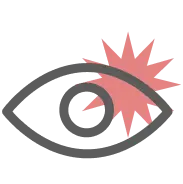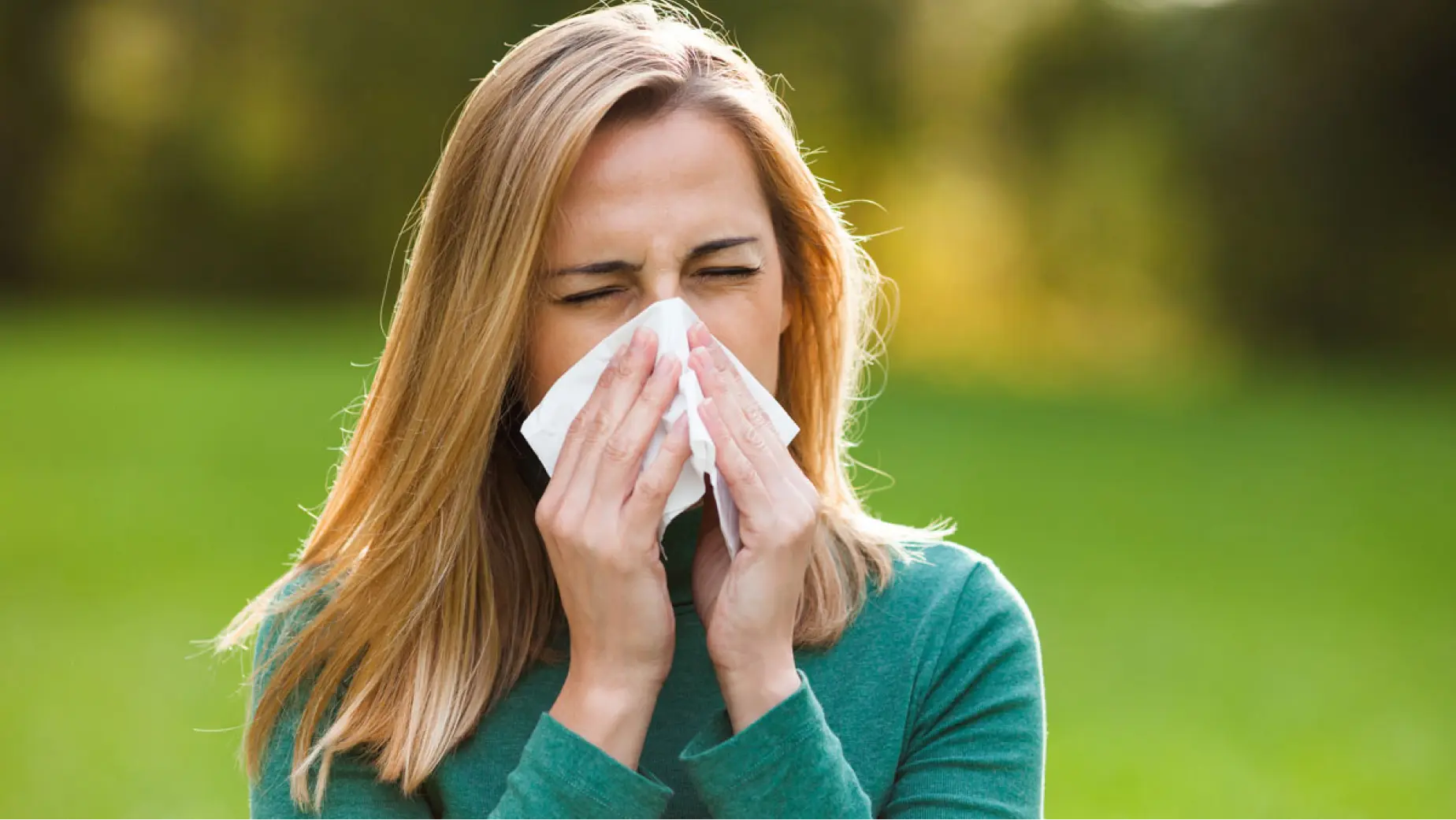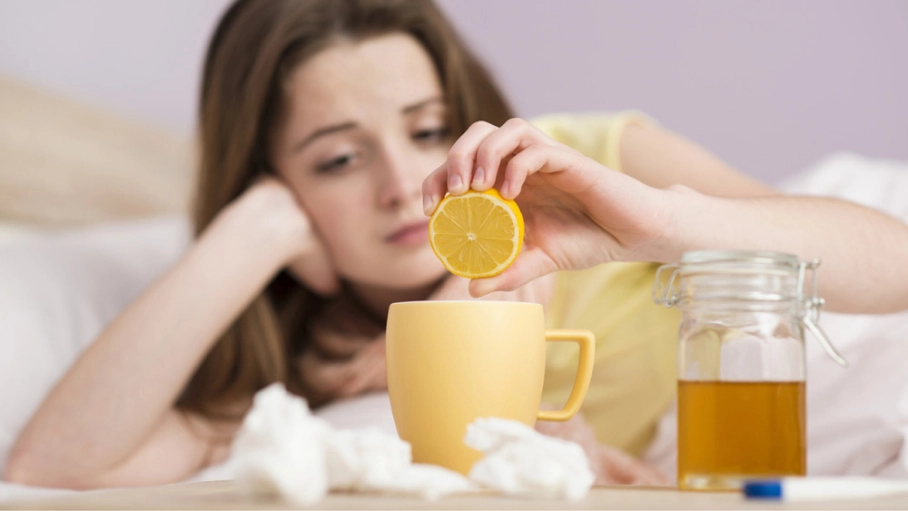What Is Pollen?
Pollen is a very fine powdery substance that’s usually yellow in color. It’s generated in a structure on the end of the stamen (the male reproductive part of the flower) known as the anther and its purpose is to fertilize other plants in the same species. In order for pollination to occur, pollen grains must be transferred from the anther to the female stigma of another plant. This process creates seeds with genetic information for new vegetation.2 Pollen falls and spreads mostly in the spring, summer, and fall. You may have noticed this powdery, yellow substance coating your car, particularly during the end of summer.
Pollen is one of the most common allergens in the United States.
Pollen allergy symptoms typically flare up when it is hot, dry, and windy out.3
Around 7.8% of the American adult population is affected by hay fever.4
What Types of Plants Produce Pollen?
The main producers of pollen include grasses, trees, and weeds, which have pollen that is small, light, and dry and therefore easily become airborne and dispersed by the wind. By contrast, plants with brightly colored flowers (such as roses) have large, waxy pollen that’s transported between plants by bees and other pollinating insects.3,5
Some of the most common sources of pollen in the United States are:
Learn about when each different type of pollen is in season with our month-by-month pollen allergy guide.
Symptoms of a Pollen Allergy
An allergic reaction to pollen occurs when harmless water-soluble proteins released by pollen enter the mucous membranes of the eyes, nose, and mouth. If you’re susceptible to allergies, your immune system mistakes pollen for invading germs. Your body triggers a complex process whereby it generates chemicals such as histamine to irritate the nerves, which leads to itching and sneezing in an attempt to expel the pollen.6,12
Symptoms of a pollen allergy vary from person to person. You may experience bouts of sneezing. This seemingly annoying reaction helps physically expel the pollen from your system, and it also serves as a red flag to tell you there is a high pollen count and you should leave the area if possible.6 In conjunction with sneezing, you may experience additional allergy symptoms with your nose and eyes. To learn more about these symptoms, visit our Understanding Allergy Symptoms page.
Some common symptoms of a pollen allergy include:
Why Am I Allergic to Pollen?
Studies suggest that having a blood relative with allergies or asthma increases your risk of having allergies. Prolonged exposure to allergens also plays a role in whether you develop allergy symptoms, therefore, even if you have a genetic susceptibility, you may not develop allergy symptoms if you avoid allergens.
If you’ve made it into your 20s, 30s, or 40s without allergies, you may wonder if you’re home free. Not necessarily. It is possible for adults to develop allergies to pollen and other triggers even into middle age. Once you reach middle age, your chance of developing allergies to pollen decreases. The immune system weakens as you grow older, so it’s less likely for it to experience a hyper-allergic reaction.8
In general, the number of individuals suffering from hay fever is increasing in both the United States and around the world. Experts aren’t sure why the number of individuals affected by allergies are increasing but speculate more airborne pollutants, dust mite populations, and less ventilation in our homes could play a role.9
How to Manage and Treat Pollen Allergies
The good news? There are many ways you can manage and treat pollen allergy symptoms.
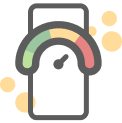
Keep Track of your Pollen Forecast with the AllergyCast® App
While you can try to guess how heavy the pollen is falling from the weather and time of day, you can also use our allergy tracking tool to help determine the pollen forecast. Check out the AllergyCast® app for multi-day allergy forecasts, symptoms tracking, and additional allergy relief tips.

Plan your time outdoors based on pollen count
One of the best ways to manage a pollen allergy is to avoid exposure to pollen as much as possible and go outside when pollen counts are lowest.
All allergy sufferers know the amount of pollen falling varies by the season. However, the weather can also affect it. Dry, windy, and hot days can result in pollen being carried over long distances. On the other hand, you may find relief when the weather is humid and rainy because pollen is more likely to stay on the ground when it’s damp. Days without wind can be better too since pollen is not as easily spread when the air is still.4 Even the time of day can affect the amount of pollen in the air; typically pollen counts are lowest before dawn, rise throughout the morning, and peak around the middle of the day.
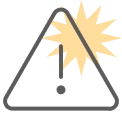
Avoid unnecessary exposure to pollen
Along with trying to stay inside as much as possible when pollen levels are high, you can take additional steps to protect yourself from allergens. Wear a dust mask when working outside, or better yet have someone else do the gardening and yard work for you.10
It’s also wise to keep pollen out of your living area. Close all doors and windows and use air conditioning in your home and car. Wash any clothes that have been worn outside and attracted pollen as soon as possible. Be sure to dry them in the dryer and not outside on a clothesline.3
Keeping the air and surfaces of your house clean can also help. Look for portable air filters and vacuum cleaners with high-efficiency particulate air (HEPA) filters for best results.11
Learn more about how to reduce indoor allergens and improve indoor air quality.

Choose your outdoor greenery wisely
While you can’t control the world, you can decide what trees and plants populate your yard. Tree pollen is produced earliest in the season, and poplar, willow, and cottonwood trees are some common culprits. Try to identify which trees trigger allergy symptoms and consider replacing them with a different type. Similarly, populate your garden with trees and plants fertilized by insects, such as pear and cherry trees and roses, in order to reduce pollen-heavy vegetation.3
Weed pollen can also be problematic for allergy sufferers, especially in the late summer to early fall. Pollen can come from a variety of weeds with ragweed, generating 1 million grains each day from just one plant. Pollen from sagebrush, tumbleweed, pigweed, and more can also cause an allergic reaction. To reduce the pollen count in your yard, try to keep up with weeding and brush removal and use rocks or plastic gravel to prevent weeds from growing.3

Take ZYRTEC® for Pollen Allergy Symptom Relief
With some effort, most allergy sufferers can reduce their exposure to pollen — but it is very difficult to avoid it completely. That’s where medications and other treatments come in. Antihistamines, like ZYRTEC® Allergy Relief Medicine Tablets, can help manage many allergy symptoms such as sneezing, runny nose, and itchy eyes by blocking the effects of the histamine released by an allergy sufferer’s overactive immune system. Decongestants, such as ZYRTEC-D® Allergy + Congestion Relief Tablets can also help you fight your allergy symptoms while relieving congestion.









